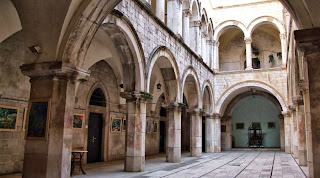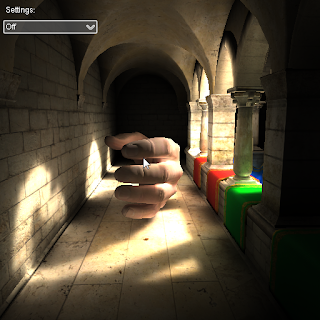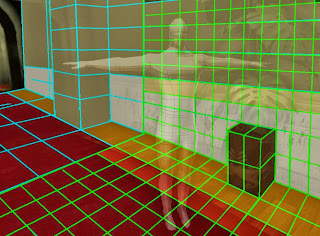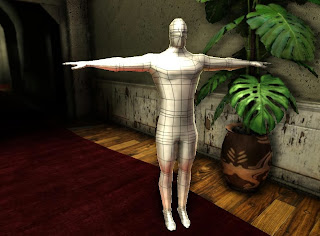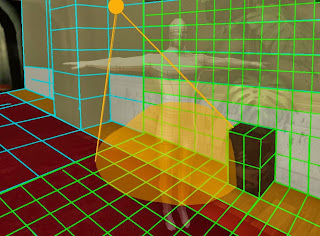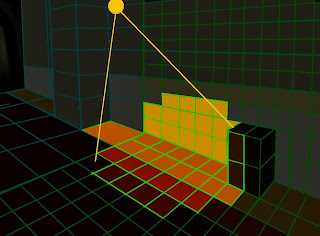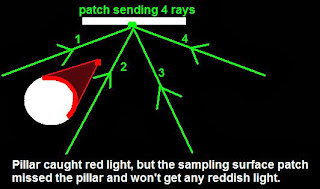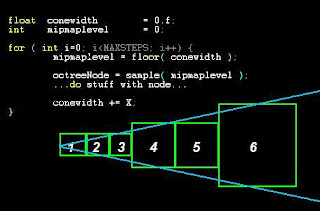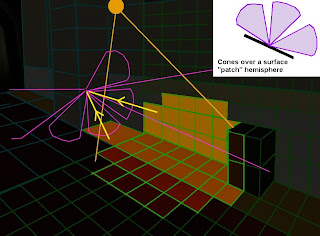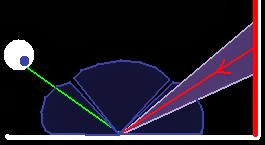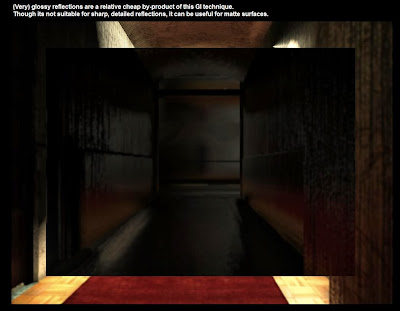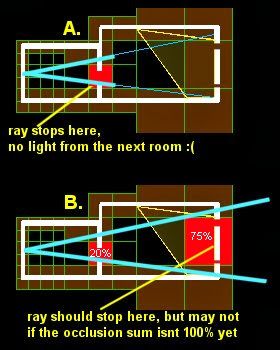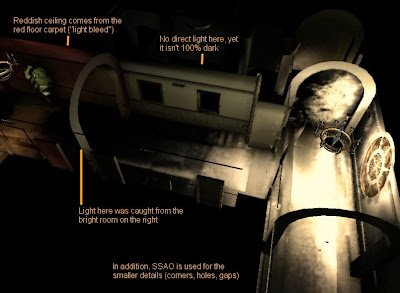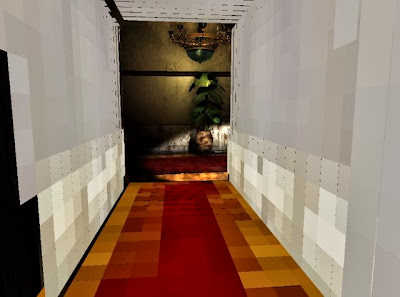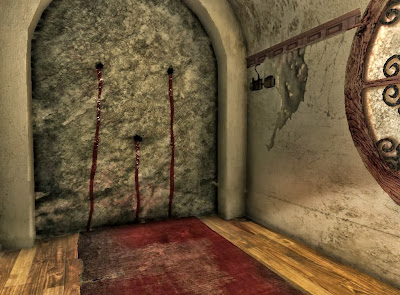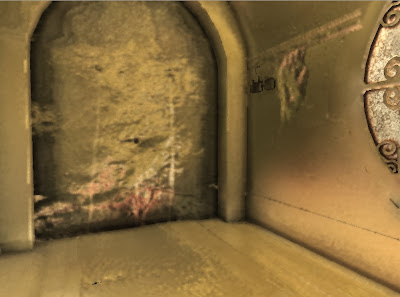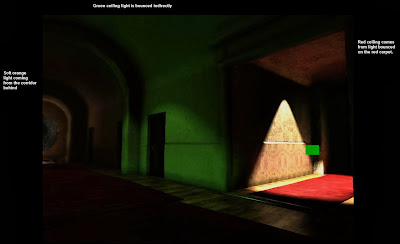As for flaky good promises, here some from the T22 department:
* Finish the official demo movie early 2014
* Finish another little bonus movie early 2014
* Push demo to (Dutch) games magazine & recruit
* Make it possible for artists to earn a bit with their work
* Possibly start a crowd-funding campaign
* Start making a Playable Demo - yes, something you can download
The next official demo should have been finished already, but you know, I'm not a God that can turn things the way he prefers. The good news is that all 3D maps, props and textures have been made. Audio still has to be done, but usually the guys are very quick with that. The biggest obstacle is animating. We have some real animated stuff here, rather than breathing blobs or programmer-"art" Milkshape animations. Besides needing time to produce the animations, it also takes some programming work to handle the incoming files. Let's just say FBX & Collada aren’t very cooperative when it comes to skeletons & rigs.
The other "bonus" is a little experiment I'm doing in the meanwhile. Don't expect too much of it, and it might disappear soon from the internet again because of some reasons, but nevertheless, it should be fun. Below a little taste. It should be finished pretty soon because I'm doing all the maps myself. Yup, programmer-art again, but at least I'm pretty fast once I got my teeth in it. And to make it look a bit nice, we have several textures & props we can reuse by now. Having a library of "stuff" can truly boost the development speed!
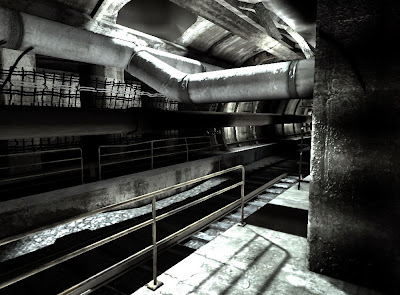
What could it be?
The future of T22
----------------------------------------------
Far more crucial for 2014, is how we continue this project. As pointed out above, progress isn't exactly... fast. Honestly, it's way too slow to achieve a "product". Something finished, something that can be sold. Of course the goal is not to make a 30 hour game that beats the shit out of all other AA-titles. Not that I don't have enough story and ideas to create a true full game, but the marathon would be of epical Duke Nukem Fornever proportions. I wish it was different, and three years ago, I honestly thought it would go a bit different, but the bottom-line is that you just can't create a full game with a handful of hobbyists / part-time artists. At least not with the ambitions and quality requirements Tower22 has.
I'm a dreamer, but not stupid. Something has to change, otherwise you'll be reading the same kind of Blog updates, watching some random screenshots, and having a little demo-movie once in a while for the next 20 years. As stated above, the next demo(s) are used to attract new talent. As usual, we'll need guys that can produce 3D environments, props, and draw textures. We also need a few concept artists, and someone who's going to make that damn UI finally. But practice from the last three years taught me that getting people that are A: talented, B: want to commit for free, and C: have plenty of time, is an almost impossible combi. You won't get a full bottle of super quality 100 year old whiskey for free either.
But moreover, if you are lucky enough to find talented people, it seems to be even harder to keep them, or at least have them so much motivated that they are willing to spend a sufficient amount of their time on your project. They simply have other things to do. Usually in the beginning they are motivated, but Tower22 isn't the kind of product you can finish within a month or half a year. It will take years. Of course you can chop it up in smaller milestones or targets, like the movies we have. But even a seemingly simple movie can swallow a year if you don't have the whole team working on it in second gear. I'll spend somewhere between 12 to 25 hours a week on T22. But the sum of hours the rest (~10 men) spends, varies between 0 and 15 hours. Sure there are peaks, but by default, everyone is occupied with study, work, family, personnel issues, freelancing, or just chilling out. If I'm lucky, one or two persons "wake up" for a week, and produce something. Usually they do a very good job, but the pace is too unpredictable to plan anything. It makes the progress slow, and it demotivates another to force themselves spending time on the project even when they're not 100% in the mood.
That sucks, but it happens to pretty much any "hobby" project. Whether it's producing a game, or making music with your super awesome gothic garage band. People need short term satisfaction. Very natural. The reward could be dumping a cool movie on Youtube and getting nice reactions, it could be mastering a new technique and feel proud about it, it could be meeting up with friends and having a nice day practicing your hobby. And obviously, it could also be a cash reward. Hey, you don't wake up every day for work just because you like it so awfully much, do you? Don't worry, 99% doesn't. I like my job quite a lot, yet I still need to be forced to be there every morning, every day, and night if needed. Salary, compliments, challenge, satisfaction, but also a "penalty" when not doing what you’ll have to do, are the well known tools to achieve that.
Components like salary and penalties are often missing in hobby projects. Challenge and satisfaction might be there, but don't underestimate that repeating the same thing over and over again, like making 10 different corridors, isn't exactly a challenge or satisfaction anymore. Even the coolest movie- or game projects are made of hundreds/thousands smaller, repetitive, boring tasks. But at least those employers pay a salary to compensate.
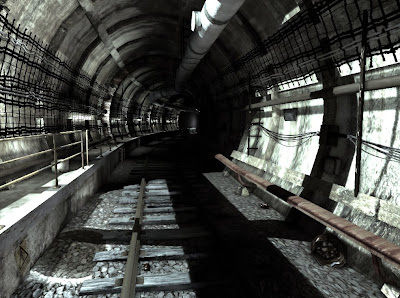
Nobody on the dancefloor
----------------------------------------------
Well, you get the point. Just making another demo-movie and initially attracting 6 new artists, is still no guarantee for future success. In practice, 75% will walk away sooner or later, and/or just doesn't have the talent or dedication you hoped for. You'll be blessed with the remaining 25% (or whatever number), but don't put your tools in a dusty box, rusting away. Making a big project like this, is a team effort. Everyone needs to help & stimulate everyone. Easier said than done, because in pretty much all cases, a newcomer doesn't know any of the existing team members. Duh, that happens at regular work too. Yeah, but at least there you meet your colleagues every day, you speak the same language, and if your boss is a wise man/lady, he organizes events with alcohol a few times. Team-building. I'm a shy guy, so I won't bother anyone with questions or personnel stories. But... if you know you each other longer and they remember you dancing the Macarena, losing your balance and falling flat-out on the floor during that Christmas party, things will go “smoother” from then on. You broke the ice. Literally maybe.
You don't have that luxury with the average hobby project organized via internet. Although half of the T22 members lives in Spain, and a few actually met each other, it’s just very rare that people have a real bond in this context. I wish I could invite them here for a Christmas party and dance the Macarena, but it's just not possible. And making jokes or get drunk together via Skype is... meh, not my cup of tea either. As a result, we don't really work as a team. I'm sure efforts can be done to boost that, using the internet. But me myself isn't much of a very open, social creature, neither do I like Skype, Facebook, Twitter or Social Media in general. Thus, I'm not the best type of glue holding them together.
Social Glue
----------------------------------------------
Right right right. Plenty of issues. We all get it why the Tower22 development is slow and hard. But it wouldn't be Christmas & (almost) 2014 if we couldn't bring a positive message, filled with Hope and light! As for the social contact thingie, I will focus the upcoming demo-movie on Holland. Not that outsiders aren't welcome anymore, but I truly hope to find at least a few persons somewhere nearby. Someone I can drink beer with, invite for a weekend to work on T22, and speak his or her own language if there are difficulties (or jokes to make). A group of friends is capable of doing more than a group of scattered individuals. And hopefully groups of friends can be a fundament for the rest of individuals as well. If you get a new job, you usually try to join a sub-group within the company that feels most comfortable, don't you?
Unfortunately, the Netherlands doesn't exactly have a booming games-business. The only big company I can name, is Guerrilla (makers of Killzone). But I refuse to believe we aren't creative with 3D tools. So I'm hoping a lot of Dutch are just waiting for a fun, nearby project they can hop on. I tried to find Dutch game-dev communities, but either I didn't search hard enough, or they just don't really exists. But, pretty close to my living place, you can follow a game-study since 8 years or something, and we also have a popular games-magazine (also known in Belgium). So, if we can contact them, they hopefully promote us a bit, waking up the regional hobbyists. And if that works out, we could try to do the same in Spain, or other places. Making local clusters, each with a team/beer captain.
Money money money, it’s so funny.
----------------------------------------------
Getting good people is one thing, keeping them (working) is another sport. As said, we lack reward & penalties. Of course I can’t kick someone’s ass because he decided to play FIFA14 instead of making a box with 3D banana’s. But what we can do, is introducing a reward, and “punish” by not giving a reward or the nicer jobs to those who aren’t productive.
Only problem is that I didn’t born in an oil-well. Neither did we win the lottery, or did I chose to be a banker for a living. So how to reward in the first place? It will be hard indeed, but not impossible. There are some ways to create a (small) budget for this project:
• Be patient, be super lucky, and get in touch with a big investor
• Start a Crowd-Funding campaign (for example, “Kickstarter”)
• Open a “Donate” box on this blog and/or the website
• Invest yourself
• Allow artists to sell some of their work made for T22
The first option might be possible if you have a truly nice showcase. But in order to generate that showcase, you still need to produce something first. When it comes to actually realizing a full game, it might the only real option, but it’s long-term stuff. Not something we should count or hope on for 2014.
The Asset Catalog
----------------------------------------------
The other money-making-tactics are easier. The last one for example is something we can start with today. Artist makes something (3D object, texture, audio sample, …), and then puts it for sale on a website such as Unity. The income isn’t meant for T22, it would be too much of a hassle to make deals. For now, I just hope it will boost the artist to get things done properly & ASAP. If he makes 200 extra dollars with a rusty metal barrel, good for him. I’m just happy he made that barrel in the first place. If the summation of assets really generates a big income for artists (which I doubt), we can always re-evaluate this strategy and look for a system where T22 promotes their assets and catches X% of the income. But let’s start simple.
Of course, an artist can’t just sell any object made for T22. Some are real specific eye-catchers or game-items. So what I did, is setting up a big listing of assets in “Asana”, a (free) web-application you can use together for planning and describing tasks. For each asset, I’ll tell whether its sellable or not. If the artist actually wants to sell the asset is up to him. The only thing he has to do is asking permission, and put a T22 logo/link with the asset (which hopefully generates a bit of additional traffic).
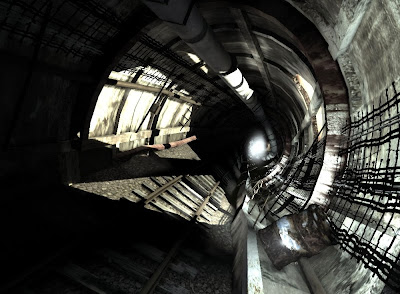
Too much liquor filled chocolates this Christmas
Pay-per-Asset system
----------------------------------------------
Asides from telling whether an asset is sellable or not, I also attached a bounty price on each. Wanted, a stinky cowboy hat. Reward 8$. That kind of stuff. The idea is that, IF we have a budget, each asset will be produced for a small reward. If all goes as planned, something like a table or chair object would gain you 16 or 20$. The more complicated or rare objects (or drawings, or sounds, or rigs, or …) come at a slightly higher reward. Nope, you won’t get rich of it (unless you are a robot producing assets 24/7), but it’s always better than nothing. Hey, if you produce one or two asset per week (instead of a small, random amount per few months like now), it would give you a nice little monthly bonus. And maybe even more if you manage to sell the same item as well. Do the math.
The most important aspect, is that people get boosted to keep going. Even on the slightly boring tasks. If 8 artists make 3 assets per month average –which is very reasonable- it would mean 24 assets per month are made. If the total amount of assets to-do is 400, it would theoretically take 17 months to get all the work done. Look, now we can plan something. And I’m convinced that once a couple of artists are really steaming, it’s far more easier for others to get sucked into that flow.
One thing I like in particular about this system, is the simplicity. The artist either accepts or denies the offer. Then in the end, I’ll accept the result. Or not. It’s all on my terms. That makes me sound like Saddam Hussein or Stalin, but the last thing I want is arguing. You know, money “enables”, but also makes people dirty. I can’t verify if an artist spend 10 minutes or 10 hours on an object. I can’t judge how much sweat it took to curve a nurb in Maya. If we had to discuss the reward for each asset, it would become chaos. My way or the Highway (hush, I’m a very reasonable guy).
Go go Kickstart rangers
----------------------------------------------
Nice, but now the real question. How to get that budget? Based on a Playable Demo, I wrote down pretty much all assets in Asana. Each with a reward, a bit of information, whether it can be sold or not, et cetera. Based on the numbers (+ some extra margins), I came to a conclusion that 7.000 to 7.500 USD would be sufficient to get all those assets made. That excludes my programming work btw, since that is very hard to classify in small tasks. I can make a particular technique, but usually it’s never really finished. Anyhow, now that we know some numbers, we can start accepting donations.
I never really liked the idea of asking for money. I see, smell, drunken hobo’s begging for a dime so they can buy liquor and poop their pants comfortably. But, several people here suggested to accept donations nevertheless. I explained my objections, basically telling I don’t want to steal someone’s money on something I can’t 100% guarantee. The most beautiful reaction I got on that, was somebody saying I stole their chances to invest on a product they like to see happening. Touché.
Opening a donation box shouldn’t be too difficult, plus I can donate on a monthly basis myself. As shown above, we don’t need ten-thousands of dollars. Yet, I’m not quite convinced that this will bring us a budget of 7.500 USD. And notice we may need a bit more for web-hosting a 1 or 2 gig demo, or whatever expenses I forgot about.
One popular way to collect a certain amount of money, is using a Crowd-Funding website such as Kickstarter. Our target would probably be 11 or 12 thousand USD. I believe about 2k disappears again into the pockets of the website, so we’ll keep 8 or 9k. 7 or 7.5k is used for asset production, the remaining budget for God knows what.
Getting 11 or 12K doesn’t sound like a bridge too far. I tried to keep it relative low to increase our chances (it’s all or nothing with Kickstarter, you only get your money if the target was reached). The only technical difficulties might be taxes, and the fact that I can’t use Kickstarter as Dutchman in the first place. Oh shit. But I’m sure there is a workaround.
Promises, promises: The Playable Demo
----------------------------------------------
But maybe more important, no one will spend money on vague promises. Tower twenty six? What the hell is that? Obviously we need our demo movies more than ever this time, because without recent stunning visual materials and vivid discussions on the webs, you’ll be doomed. Second, you’ll need to win trust. T22 delivering nothing but a few short clips the past 3 years doesn’t sound like a very wise idea to spend your Bitcoints on. Maybe a few über-hardcore horror fans will do (hello), but we probably need a bit more than that to reach the target.
We need to be open & transparent about our goals. We need to be able to produce something concrete, in a reasonable amount of time. For that, I thought about a Playable Demo. Something you and I can download, for free. A real piece of the Tower22 game. A small piece, say about 15 minutes of gameplay. But a piece nevertheless. Something that will make you hungry for more, and hopefully unlocks bigger opportunities for collecting a budget to produce an actual 1st Episode.
The truth is, we can make that demo in ~1.5 years, IF there is a budget & a bunch of motivated artists. Probably it won’t run like a charm on any computer. You won’t get the best graphics or super intuitive physics. But you should get an interesting little journey through a part of the Tower, including some puzzles, filthy gore, and not so nice entities that keep you running (or hidden under bed). A teaser.
Well kids, once we actually get to the Crowd-Funding phase, we’ll sure notify you again. With a shorter, more powerful text. And with fresh screenshots, drawings, and one or even two demo movies. You as a loyal reader has the right to know what we’re up to. And yeah, we are up to something. We are just as slow as Halflife Episode 3, but at least we try to show you or even get you playing in the meanwhile. But first, enjoy these days. Sometimes, there are more important things than making video-games! Good wishes.













